Regional Centre of Competence in Hospitality and Tourism Coming to Split
As Morski writes on the 16th of June, 2020, recently in the Dalmatian city of Split, Tourism Minister Gari Cappelli signed a grant agreement with the Split School of Tourism and Hospitality Management in the total amount of 74.3 million kuna. The project is 85 percent funded by the European Social Fund and 15 percent by the Croatian state budget. The allocated funds cover 100 percent of the eligible costs under the project.
''Tourism development is based on innovation, quality and hospitality. The key element is primarily people, those who create ideas. Education based on continuous improvement, the development of skills and knowledge with top experts and practical experience, is a long-term solution that ensures the future of the country's tourism. Croatian tourism is focused on being the best and this is exactly our desire through this project, to create conditions in which we'll continue to develop human resources and encourage people to be the best in the business in which they're engaged. Along with Split as one of the most promising tourist destinations in the Mediterranean, a total of six regional centres of competence in tourism and hospitality are being set up throughout Croatia, thus creating the backbone of the future strength of Croatian tourism,'' said Minister Cappelli when signing the contract.
It's worth reminding ourselves that more than 500 million kuna has been provided for the concept of regional competence centres from the European Social Fund and the European Regional Development Fund. In the tourism and hospitality sector, six regional competence centres have been appointed. They are the Zabok High School, the Split Tourism and Hospitality School, the Osijek Hospitality and Tourism School, the Opatija Hospitality School, the Pula School of Tourism, Hospitality and Trade and the Dubrovnik Tourism and Hospitality School.
The Regional Centre of Competence in Hospitality and Tourism in Split will implement a project entitled "the Establishment of a Regional Centre of Competence in the Tourism and Hospitality Sector in Split".
The main activities of the project will be focused on the implementation of education, training and education in hospitality and tourism based on work and according to the needs of employers operating within the sector. Thus, the project activities will be carried out with reputable hotel employers, the county's chamber of commerce and others. Through this project, cooperation was ensured with educational institutions, namely with three secondary vocational schools in tourism and hospitality in the county and with the University of Split.
The Regional Competence Centre in Split will develop a standard of occupation, qualifications and a vocational curriculum. In addition, relevant standards and educational programmes in adult education for qualifications will be developed: food and beverage manager, gastronomy specialist for Dalmatian delicacies, event manager, small hotel manager and hotel reception manager. Given the scope of the aforementioned qualifications, the regional centre of competence in hospitality and tourism in Split will profile itself as a centre of excellence that will generate the best and highest quality human potential primarily in the hotel segment, but also through adult education programmes focused on in gastronomy in Dalmatia. In response to the changing needs of the labour market, informal training has been additionally planned.
The development and implementation of regular secondary education programmes, adult education programmes and lifelong learning programmes, the procurement of equipment and innovative programmes for the use of new technologies in this Split facility will ensure the proper working conditions for these programmes, thus becoming a centre of excellence in vocational education and training and lifelong learning in tourism and hospitality.
For more, follow our lifestyle page.
Hope for Croatian Tourism? Trogir Hotel Full Over Long Weekend
As Novac/Privredni/Jozo Vrdoljak writes on the 15th of June, 2020, Trogir's Brown Beach House Hotel & Spa, which was created on the back of the reconstruction of the former Duhanka building, had one hundred percent occupancy for the recent extended weekend (with Tijelovo).
According to the forecast of Stanka Karadzija, the director of the Brown Beach Hotel, it will also be full next weekend, when many guests will combine that particular weekend with the celebration of the Day of Anti-Fascist Struggle/Dan antifašističke borbe.
;;We reopened the hotel on June the 1st and since then we've recorded excellent occupancy given the situation, more than 50 percent of our capacities were filled during those first few days of June while at this time, during the extended weekend, we didn't have a single room available.
We may have a slight advantage over the competition because Brown Beach is very popular due to its unique concept, great design and offer. In the first three years of our operations, we hosted the corporate events of some of the world's most prestigious brands, including Mercedes, Porsche, Google… Therefore, our offer of June packages at lower prices than usual was greeted with great enthusiasm by our guests, and especially by Trogir locals. The most numerous guests in June have been locals from here in Trogir, followed by Germans and Austrian nationals. Almost everyone arrived here by car,'' explained Stanko Karadzija.
She also noted that this particular Trogir hotel is currently well filled, so it is likely that next weekend it will manage to reach a previously unimaginable 100 percent occupancy level with respect to many last minute bookings and an increased number of walk-in guests, which, as she herself says, wasn't really a common situation in previous years. As for further forecasts, the hotel director pointed out that the situation has changed significantly this year because of these surreal circumstances in which we find ourselves.
''In previous years, July would have been almost sold out by this time of year, but this year it is different, because the behaviour of our guests has changed. Five days before the extended weekend, we didn't imagine that we would be completely full," she admitted.
As for prices, Karadzija admits that corrections have already been made to suit the coronavirus-dominated situation.
For more on Croatian tourism and hotels in the coronavirus era, follow our travel section.
Croatian Tourism: When Might Prices of Accommodation Fall?
In the first part of June, 20 percent of last year's tourist results were achieved, as Poslovni Dnevnik writes on the 15th of June, 2020. Slovenes, Austrians, Hungarians, and from now onward, Germans can come to Croatia without special conditions and the need for self-isolation upon return. Will it save Croatian tourism? That question was analysed on Croatian radio.
''We'd certainly be satisfied with as many numbers as possible. We're pleased with the number of more than 115,000 tourists currently staying in Croatia. Two weekends ago, we started out with 26,000 registered guests. Today is a turning point in terms of the epidemiological measures that relate to all guests coming from our largest emitting markets. At the moment, the most numerous guests are Germans, Austrians, Slovenes, and even Czechs,'' Assistant Minister of Tourism, Robert Pende, told HRT.
There are currently 115,000 tourists in the country, and there will be more Czechs arriving here when the train leaves the Czech Republic for Croatia on June the 30th three times per week to Rijeka. The interest is great, despite the recommendations in these individual countries, for example, Germans have been recommended by their authorities to spend their holidays at home in Germany to try to boost the German economy.
''Everyone will feel the disturbance, especially from the German market. We assume that the Germans listen to the recommendations they're given, but their capacities in the Baltic sea are almost full. These are tens of millions of guests going to other destinations. Due to the situation in the markets that are traditional for Germans (Spain, Portugal, Italy, Greece, Turkey), these are air destinations, air bridges haven't yet been established, and there's a question of safety when returning from destinations that are a little bit further away. We're accessible to them by car and they can be back home in a couple of hours,'' said Robert Pende.
''There are currently about 6,500 guests in Rovinj. Most of them are Germans, locals, Austrians and Italians. For now, the Dutch and Hungarians are absent. At the moment, we're at 30 percent of the level of overnight stays we had when compared to the same period last year. This is encouraging, we hope that in July and August, we'll manage to increase those percentages,'' said the mayor of Rovinj, Marko Paliaga.
Across the entire spectrum of Croatian tourism, price reductions were expected but have not yet really occurred...
''The very recommendation of the Minister of Tourism is not to change the prices, especially when it comes to private accommodation. It's still a little too early to talk about price adjustments. By July the 1st, we'll have a picture of the movement of our tourist traffic, and then I believe that some will either adjust their prices or keep the prices as they are but with the provision of a better quality of service,'' explained Paliaga.
The president of the association of travel agencies at the Croatian Chamber of Commerce, Boris Zgomba, touched on the topic of booking.
''When we talk about it, we try to predict some events. Given the fact that we're currently in a situation we've never experienced before, it's very difficult to predict events. But some trends are already being read. We're witnessing an influx of guests and tourist traffic. More than a third of our guests are coming here because they own property, meaning they're guests who have their own motives for coming and who are not so-called commercial guests. We're slowly moving towards what is visible to us as an opportunity,'' said Zgomba.
''Booking is moving, and we'll be able to see in the coming weeks whether this is a dynamic that will manage to satisfy us,'' he added.
The advantage of Croatia is its good epidemiological picture. Proper adherence to epidemiological measures is a guarantee of the success of Croatian tourism this year.
''As in all other parts of Croatia and Istria, the measures issued by the epidemiologists are properly respected. I believe that our guests will also respect everything recommended to them, as well as what they were taught in their own countries. I'm confident that we can respond to the new challenges, and I hope for more numbers than all the forecasts we've been given,'' Paliaga said.
''Croatia has shown that it knows how to deal with the epidemic and there's no doubt that our system can, in these situations, with its experience of dealing with coronavirus, in addition to adapting the system, respond to these challenges when it comes to risks of infection,'' said Pende. He added that it we can be quite certain that there will be new cases of coronavirus in Croatia, but that the spread of the infection isn't expected in certain destinations.
"After all, we still have a few imported cases," Pende said.
''Looking at the demand at the moment, camps, mobile homes, holiday homes that are more isolated are booked and facilities that aren't considered to be particularly crowded also are,'' noted Zgomba.
Italians are welcome in Croatia, just like all other guests are.
As for the Italian guests, who are typically the most numerous in Croatia in August, Paliaga said that this weekend they had eight percent of tourists from Italy in the total structure. Italy was severely hit by the coronavirus pandemic, as was the United Kingdom and Spain if we're talking solely about European countries, and some countries have been reluctant to allow citizens from the above countries in.
''One shouldn't differentiate between guests by which country they come from. I believe that the guests who will come, especially from Italy, will be responsible and that they'll adhere to the measures and instructions which were given to them. We must do everything to make all of our guests feel safe and welcome,'' Paliaga said.
''The Italians are just as welcome as all the other guests are,'' Zgomba said.
For more on Croatian tourism in the coronavirus era, follow our travel page.
Vir Island Welcomed Most Guests in Croatia Last Month
June 15, 2020 - In May, the island of Vir boasted the most guests in Croatia, more than Rovinj, Medulin, Mali Losinj and Krk. Despite all the limiting factors, Vir recorded 13.4 percent fewer overnight stays and only 1.1 percent fewer tourist arrivals compared to last year!
Slobodna Dalmacija reports that according to the eVisitor system, a total of 49,566 overnight stays were recorded in Vir in May (57,208 last year) and 2,877 arrivals (2,909 last year), of which Croats achieved 37,252 overnight stays (75.1 percent) with an increase of 26.9 and foreign guests 12,314 (24.9 percent) with a drop of 55.8 percent. Most of them were Slovenes and Germans, Hungarians and Austrians.
For the latest travel info, bookmark our main travel info article, which is updated daily.
Read the Croatian Travel Update in your language - now available in 24 languages.
Join the Total Croatia Travel INFO Viber community.
Now, you might be wondering... HOW?
"How's that? It's nice! We quarantined the guests," says Kristijan Kapović, the mayor of Vir municipality.
Kapović was in the company of an 'expert council', the director of the municipal tourist board Srđan Liverić, the head of the tourist agency Vir Turizam Mate Čulina, and his deputy Antonio Vučetić. The theme at the table was the tourist figures of this unusually popular island.
"From January 1 to June 1 this year, we have 53 percent in arrivals of foreign guests compared to the same period last year, or a decrease of 39 percent in overnight stays. In the same period, we have an increase of 15 percent in arrivals and as much as 39 percent in overnight stays of domestic guests compared to last year," said Kapović.
Of foreigners, mostly Slovenians came, only two percent less, followed by Germans (-54 percent), BiH (-52 percent), Hungarians (-60 percent), Austrians (-72 percent). I emphasize that these are the numbers while the lockdown for Austria, the Czech Republic, Slovakia was still ongoing," said Kapović.
"At the time when we closed our borders and declared quarantine, there were about 700 guests in Vir, mostly Croats, Slovenes, and Hungarians. Some found themselves there, and some escaped the coronavirus here. These are mostly our weekenders, as we call them, who come to us all year round because they have their real estate here. But now they find themselves in a situation where they have to stay by force.
Their overnight stays were reflected in the statistics and hence ours, I would say a minimal drop in the number of arrivals and overnight stays for the first five months, given the general circumstances," the mayor explains.
Vir survived the pandemic without a single infection, which further convinced its regular guests that it is a safe holiday destination.
Namely, out of almost twelve thousand registered facilities on the island, as many as ten thousand are intended for occasional housing. The owners of more than half of such facilities are foreign citizens, and most of them are from Slovenia, Hungary, Slovakia, Bosnia and Herzegovina, the Czech Republic, Germany, Austria, and Poland.
"Vir had recorded 154,096 arrivals and 2,635,664 overnight stays last year, of which 110,258 were foreign tourists who made 1,159,908 overnight stays. We were the eighth destination in the country. We achieved these figures thanks to the arrivals of foreign and weekend visitors. Foreigners and weekenders come all year round and spend an average of fifteen days on the island, while domestic guests stay for almost forty days.
They say that we are a destination of apartments and non-commercial tourism. I claim to you, and this crisis has confirmed this, that our tourism is more resilient and sustainable long-term than the tourism of large hotel complexes that have been insisted on for years. This is due to the influence of certain lobbies, and not a well-designed development tourism policy," claims Kapović, who emphasized again that Vir was the eighth destination in the country.
"Out of the total number of overnight stays from last year, almost 1.2 million are foreign guests," said the director of the Tourist Board, Srđan Liverić.
"Our main season lasts from June 15 to September 15, and in that period, we achieve 80 percent of tourist numbers. The other 20 percent is equally divided into pre-season and post-season," he explains.
The head of the Vir Turizam agency Mate Čulina joined in: "In addition to these cottages and holiday homes owned by foreigners, there are 2,500 registered renters with fifteen thousand beds on offer. Landlords alone make about 800,000 overnight stays a year," says Čulina, adding that the municipal agency works with mostly Croatian landlords.
"Provisions for this year are about 30 percent weaker than last year. For example, some who had provisions worth 140,000 euros for the season in January has now dropped to 30,000. But not everything is so black; a lot is on hold. People have lowered prices from 20 to 30 and even more for all summer months. However, they hope that after the opening of the borders, which will surely happen by the end of June, they could achieve a positive season in July, August and September.
Of course, what worries them the most is what will happen with the pandemic, but also what will happen with the now traditional events on the island, which are a great magnet for guests and weekenders.
Guests and weekenders are mostly interested in whether there will be a Vir Summer," continues Čulina.
"Once a local event for the entertainment of domestic tourists, over the years has become the largest, most interesting and most spectacular summer program in Zadar County. When you compare only the number and quality of concerts and performers who parade through the Vir Summer, Vir seems like Las Vegas compared to Zadar.
But this is no accident. One million euros are allocated annually for the programs, organization and promotion of the Vir Summer program, and the number of entertainment and cultural events has risen from the former ten to more than seventy over the years. When sports programs that start in April and end in October are added to that, with numerous international activities, such as jet ski competitions, Vir brings guests practically all year round and fills its capacities," explains Čulina.
"So I say if the borders open, and they will right after Corpus Christi, we will get our weekenders, our regular foreign and domestic guests, the property owners on the island. If there are about 150 thousand of them this year, by all indications, we will have a good tourist season," points out Mayor Kapović.
You can read the full interview on Slobodna Dalmacija HERE.
As Croatian Tourism Sector Cautiously Awakens, Tourism Minister Optimistic
The global (and ongoing) coronavirus pandemic has taken a toll on the world's tourism and Croatian tourism, which is the country's strongest economic branch, hasn't been immune from the beating it has been given. The economic consequences are harsh in their nature, and for the sector that makes up 20 percent of Croatia's GDP, is there any light at the end of the tunnel for 2020's season?
As Poslovni Dnevnik writes on the 15th of June, 2020, the Croatian tourism sector is slowly beginning to wake up once again. Four and five-star hotels, as well as holiday homes and camps of a higher class are currently the best filled.
"The announcements are good, we're optimistic, there are more and more reservations being made every day, new guests are arriving every day, so we're hoping that everything will be fine," said Ilija Turic, the director of a hotel in Opatija.
"The announcements are very good, the rate of booking has been very good. We could expect 80 percent of the realisation of last year's traffic for July and August,'' the owner of the camp Biserka Komadina stated in a clearly optimistic manner.
Currently, the Slovenes and the Germans are the most numerous campers in Croatia giving the Croatian tourism sector a much needed spring in its step, however cautious that step might be.
"There's no fear, we're well acquainted with the epidemiological picture in Croatia and we came without even thinking about it, we also know the situation with the camp, it has been checked," said Franc, a guest from Slovenia.
"Everything is clean, you can always see the staff cleaning and washing the toilets, the environment... that's very good," said Michael, another guest from Switzerland.
The Croatian Tourism Minister, Gari Cappelli, also appeared very optimistic in front of gathered journalists in the coastal town of Opatija today.
"I'm sure at the moment, according to these first indicators, that in some counties, such as Primorje-Gorski Kotar and Istria, the results may be at the level of 40 percent," said the minister.
The first party called "Let the party begin/Neka party počne" was held on the famous Zrće beach, and the toll on the Krk bridge will be abolished from midnight onwards. On top of that, the popular Dalmatian city of Zadar is also slowly filling up.
“It’s not very far away from Germany and there’s no coronavirus here,” said Rebecca, a guest from Germany.
In Istria, many halved their prices this weekend.
"The attendance is excellent, I can tell you that we were visited by a lot of foreign tourists, as well as domestic ones," said Romina Celija from the House of Istrian Olive Oil.
Due to their locations, the Dubrovnik and Split areas generally depend on guests arriving by air. This is especially true for Dubrovnik and the extreme south of Dalmatia, which is cut off from the rest of the country by a small section of coastline owned by neighbouring Bosnia and Herzegovina - Neum. This involves crossing a non-EU border and re-entering Croatia once again shortly after.
Minister Cappelli predicts that stronger traffic, especially towards Dubrovnik and Split, will start up again at the tail end of this month. Whether the optimistic expectations of the minister will be fulfilled will be seen as early as the beginning of July.
For more on Croatian tourism, follow our dedicated travel page.
Cultural Heritage of Istria and Southern Dalmatia Highlighted on French Arte TV
June 14, 2020 - European cultural TV channel Arte TV, in its 'Invitation to Travel' show, broadcast a series of reports on the rich cultural heritage of Istria and Southern Dalmatia.
HRTurizam writes that these reports were created as a result of the cooperation and engagement of the Representative Office of the Croatian Tourist Board in France.
"Such shows that reveal lesser-known cultural and historical facts of Croatian tourist destinations are our special challenge and imperative in the tourist promotion of Croatia on the French market, since cultural heritage is the main motive for 60 percent of French people to travel abroad," said Daniela Mihalic. Đurica, director of the CNTB Representative Office in France.
For the latest travel info, bookmark our main travel info article, which is updated daily.
Read the Croatian Travel Update in your language - now available in 24 languages
Join the Total Croatia Travel INFO Viber community.
The Istria portion of the show spoke to the owners of Istrian restaurants, but also winemakers, who testified to the precious eno-gastronomic value of Istria. They presented Rovinj, which they called a mini Venice, Pula, where the gladiator games were evoked, but also the interior of Istria, where the picturesque towns of Buje and Motovun are located. The report also mentions the most common traditional vessel in Rovinj, the batana.
The second report, entitled "French Kisses from Croatia", shows the rich influence of Napoleon in Southern Dalmatia, and through a conversation with historians, the "Adriatic pearls" of Dubrovnik, Split and Trogir were presented, which delighted Napoleon and his marshals, especially Marmont, so much that by their conquest they showed the world their superiority.
"This is another way to maintain a presence and visibility in our important markets and further interest the French, but also the Germans to revisit us as soon as possible," commented CNTB Director Kristjan Stanicic, announcing that the Arte TV team will film four new reports on Croatia in mid-August and early September.
But these are not the only stories about the Croatian coast, which were presented to French viewers. Earlier, a report on the island of Pag was published, in which the specifics of the famous bura wind were mentioned, as well as a report on Pazin with which the famous Jules Verne was enchanted.
Arte TV shows are broadcast six days a week and are watched by over 800,000 viewers a day. The recorded reports are repeated on several occasions and are also available in the Arte TV media library.
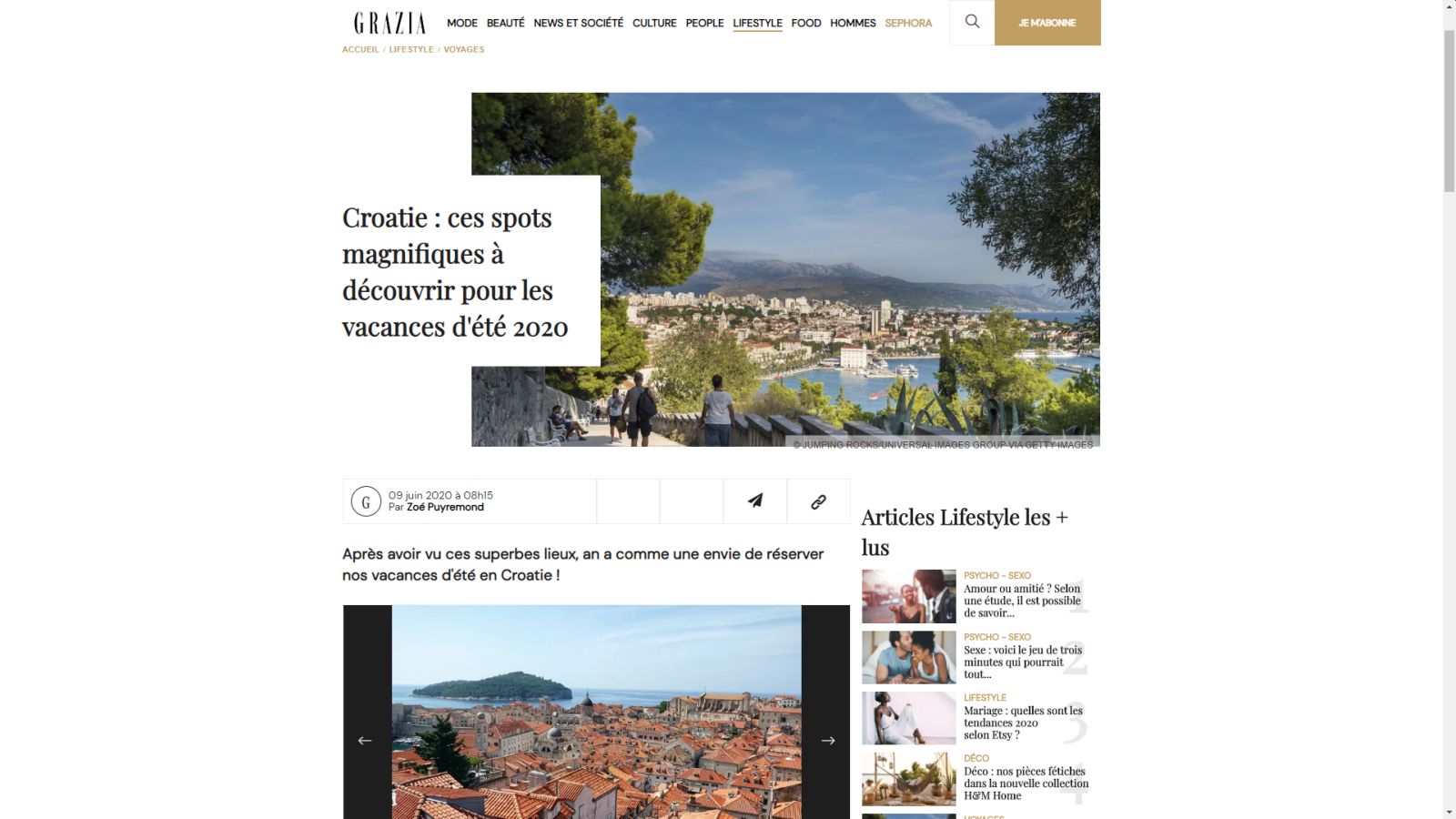
Finally, French lifestyle magazine Grazia also published the TOP 9 Croatian destinations that should definitely be visited this summer. On that scale were: Dubrovnik, Rovinj, Split, Zagreb, Plitvice National Park, Zadar, Hvar, Korcula and Krka National Park.
Tourists Returning to Croatian Coast, More and More Hotels Opening
June 14, 2020 - Thanks to the extended weekend, tourist traffic has finally begun to pick up on the Croatian Coast. So far, the first part of June is just under 5 percent of last year's results.
Currently, 111,000 tourists are in Croatia, of which 79,000 are foreign and 32,000 domestic tourists - mostly from Germany, Croatia, Slovenia, Austria and the Czech Republic, reports HRT.
Looking at the destination, most tourists are in Rovinj, Vir, Mali Lošinj, Medulin and Umag. Hotels are opening throughout central Dalmatia, and the first larger groups of guests have been announced.
For the latest travel info, bookmark our main travel info article, which is updated daily.
Read the Croatian Travel Update in your language - now available in 24 languages
Join the Total Croatia Travel INFO Viber community.
Despite the pandemic, Split's Radisson Blu Hotel, however, was anything but idle.
"We have done a lot of new and wonderful things as you can see, we have renovated the whole plateau, we are working on renovating the Spa. I am looking forward to the guests who can come from June 15," says Kristina Rogaljska, the senior hotel manager.
According to the announcements, they will be domestic guests, Germans and Austrians, but no more are expected in June. July and August should and should be significantly better, judging by the reservations received. Safety and responsibility are at the forefront.
"The safety of guests and employees is our number one priority, we have respected epidemiological measures by the Republic of Croatia and the strict measures of our group. We have plexiglass partitions in all possible places, from stickers where guests must stand at the reception and in front of the elevators to all the cleaning measures that we will carry out," adds Rogaljska.
As of Saturday, the Bluesun hotels opened on the Makarska Riviera, in Tučepi and Brela, and in Bol on Brač. Hotels in Supetar also opened their doors.
"In Supetar, both hotel houses have been opened in slightly reduced capacities and according to the announcements, the season will be like that, but we can expect a little more activity at the end of this month, and July has good bookings," says Ivan Cvitanić, director of Supetar Tourist Board.
As of June 20, more specific traffic has been announced at Split Airport, and according to updated data from the entercroatia application, about 230,000 tourists will arrive in Croatia in the next few days. We hope that at least some of them will choose central Dalmatia as their destination.
Some tourists are already vacationing in Istria. The action of the Administrative Department for Tourism of the Istrian County, which offers as many as 50 attractions of cultural and eno-gastronomic content at half price or even free - has finally stimulated the long-awaited tourist momentum. Most are domestic guests.
Baredine Cave is one of the most beautiful speleological objects, of 1500 of them in Istria. The tourist workers of Istria are satisfied with the response of visitors to the reduced price attractions.
"Right now, as I was traveling towards the Baredine cave, I saw a lot of cyclists on the road, I believe that people will slowly decide to come through to relax and appreciate the fact that we are a really safe destination, says Nada Prodan Mraković, head of the Istria County Tourism Department.
Winemakers, olive growers and oil producers also opened their taverns to guests, and are offering free tastings.
"We don't do it only today, we have all been doing it for about 20 years, on average. And every year you want to be better and better because that is the future. If you did something well, why shouldn't I do the same, and that is a healthy competition," points out Andjelo Brcic, Nova Vas.
Natural, top-quality wines, rich taverns, various attractions and beautiful Istrian nature at half price or even free. And all available to you, right now.
Paul Bradbury: Croatian Tourism 2.0, a Simple Vision for an Achievable Strategy
June 13, 2020 - It is easy to criticise the current Croatian tourism strategy, but is there a better way forward? A simple strategy for Croatian tourism 2.0.
I have been very critical of the official Croatian tourism strategy - or lack of it - in recent years, never more so than at the present time.
I have never been one to criticise for the sake of just criticism, but with the aim of identifying a problem and suggesting a better way forward .
And so, while I criticise the lack of strategy, do I have a better solution to offer?
The answer is an emphatic YES. And it does not have to cost too much.
Let's begin.
I want you to close your eyes for a moment and imagine Croatia today without two things - a tourist industry dependent on sun, sea and coastal devastation, and the Mighty State of Uhljebistan (don't worry, we will bring it back soon enough, for it is impossible to ignore).
What kind of country do you see without tourism, without Uhljebistan?
A country of natural beauty with outstanding local food and wine, very safe, English spoken, accessible to the world, affordable by EU standards, an EU member, fantastic things to see and do, an incredible lifestyle.
The Lifestyle Capital of Europe.
Does anyone do it better?
Hold that thought.
More and more people are working in the same office around the world. It is called the Internet. By 2035, it is estimated that there will be one billion digital nomads in the world.
There are only two variables in the global office - connectivity (3G, 4G, 5G) and time zones. Apart from that, our global office is essentially the same,
When we leave the office, we go home. Home for some is the village we grew up in, surrounded by the friends and family we grew up with. And for a growing number of people, home is the one thing that Croatia excels in more than anywhere else in Europe...
Lifestyle.
What if one could work all day, then leave the office and go for a swim in the Adriatic, a stroll down Stradun, or a wander through Diocletian's Palace before dinner?
There are no 'what ifs.' Digital nomads are having these experiences right now, under the radar.
What if Croatia abandoned its meaningless and ruderless strategy of Croatia, Full of Whatever Fits the Slogan Right Now for a strategy based on something real, two of Croatia's untapped jewels - safety and lifestyle.
Croatia, Your Safe Lifestyle Destination.
A Croatia based on lifestyle, authentic experiences, quality local food and wine, natural beauty. Qualities that Croatia has in abundance.
No need to devastate the coast to get our 20% of GDP each summer - stretch out the season all year, and all over Croatia. Everyone is leaving Osijek? Here is a digital nomad from Denver who can't get enough of the place. The main attractions? Safety, lifestyle, affordability, good English and good connectivity. Things which Croatia already has but doesn't use in its tourism.
Digital nomads are generally self-sufficient, creative and wealth-creating. They also have a massive opportunity to influence one of the things Croatia so desperately needs to move forward - mindset.
We have been living in a bubble of Croatia without the Mighty State of Uhljebistan. But the dream cannot last forever. It is time to bring back Croatian reality. And I see three scenarios.
1. Croatia, Your Lifestyle Destination where Uhjlebistan does not engage.
Digital nomads are already coming to Croatia, the majority for a limited time due to residence permit restrictions. A concerted move from a strategy of Croatia Full of What Comes into My Head to a concentrated campaign based on Croatia, Your Safe Lifestyle Destination will bring more nomads to Croatia. They will spend in the bars, shops and restaurants. A net gain and a lost opportunity.
2. The bank account is empty, Uhljebistan partially engages.
Having bankrupted many businesses based on its greed, Uhljebistan is looking for new sources of income. It partially engages, allows nomads to stay longer, reforms legislation a little to make it more attractive for nomads to start businesses. More revenue into the treasury, but more danger, as this increased positive mindset that these nomads bring might infiltrate the voting base.
3. Vive la Revolution!
The Croatian people finally can take no more and manage to overthrow the Mighty State of Uhljebistan. We are left with what we started with - a beautiful country which is the lifestyle capital of Europe, with a free hand to make it as attractive as possible with incentives for those who would like to come, enjoy, create jobs, and inspire the local mindset. While enjoying the incredible local food, wine, tourism and services, creating more jobs.
Mindset. Mindset. Mindset. Safety. Lifestyle. Mindset.
It is up to the Croatian people to choose. The future could be incredibly amazing, without costing too much.
CROMADS: Why You Should Move to Croatia, With or Without Uhljebistan
VIDEO: Central Istria Tourist Board Launches Promotional Tourist Video
As Novac/Barbara Ban writes on the 10th of June, 2020, this week, the Tourist Board of Central Istria launched its very first promotional tourist video called "Dare to explore", directed and produced by the Labin-based company Level 52. The video presents Central Istria as a magical region with well-known and interesting locations and points of interest.
''In these rather challenging times for Croatian tourism, Central Istria strives to position itself as an ideal combination of specialties, which will keep old and continue to attract new guests - magical landscapes, cultural, historical and natural beauty, and indigenous products and flavours of tradition'' said the director of the Tourist Board of Central Istria, Sanja Kantaruti.
The Mayor of Pazin, Renato Krulcic, added that the first promotional film for the destination was branded a few years ago under the slogan "Central Istria - the original Istria" was designed and realised.
''There is a video slogan which invites viewers to explore the heart of the Istrian peninsula with scenes of undiscovered tourist gems such as the Sopot waterfall near Pican and Badavac near Karojba, but also new views of well-known places in the area of Pazin and the municipalities of Lupoglav, Cerovlje, Karojba, Sv. Petar u Sumi, Sv. Lovrec, Tinjan, Gracisce and Pican, ie, the component of the Tourist Board of Central Istria,'' Krulcic emphasised.
The interior is different from the rest of Istria, so the destination had to get its own approach to promotion, the authors of the film emphasised.
''The goal was to tell our fairy tale that will entice visitors to explore central Istria, especially to locations that are somewhat hidden and out of the way,'' said film co-author Goran Nacinovic.
So far, such an approach has rarely been seen in the tourist promotion of Croatia as a whole, they point out. The video combines attractive locations in Central Istria with interesting characters, as well as with authentic Istrians who work diligently in their fields and live in harmony with nature.
''We wanted to make something different and innovative, aimed at the foreign market, and yet emphasise the uniqueness and beauty of Central Istria,'' says co-author Sanel Isanovic, who, along with Nacinovic, developed the story of the film and composed the music for the film.
Watch it below:
Make sure to follow our travel page for more.
PHOTOS: A Picturesque Hvar Town without June Crowds
June 12, 2020 - A look at Hvar Town on June 11, 2020.
Tourism hasn't quite kicked off in Croatia in the post corona era, though things could very well change by June 15 when EU orders are expected to open. For now, Croatian towns are as picturesque as ever, as the footprints of tourists are stilled washed away from last year.
While it's odd to see some of the country's most famous destinations empty in the middle of June, it does have its perks - and apart from feeling like you have the town to yourself, you'll be hard-pressed to find the beaches and coastline cleaner than they are now.
Today, we look at Hvar Town on Thursday morning, June. 11. A 9am stroll around the town that only has only five restaurants open at the moment, and one hotel, Riva, in operation.
9am in Hvar Town usually looks a bit different in the middle of June, as cafe crowds fill the waterfront promenade and young tourists search for the greasiest hangover cure.
More restaurants are expected to open within the next few days, and with the announcement of 70,000 nautical tourists by the Ministry of Tourism, we shouldn't anticipate such a quiet Hvar Town for too long.
Live vicariously through these photos and enjoy it while it lasts.
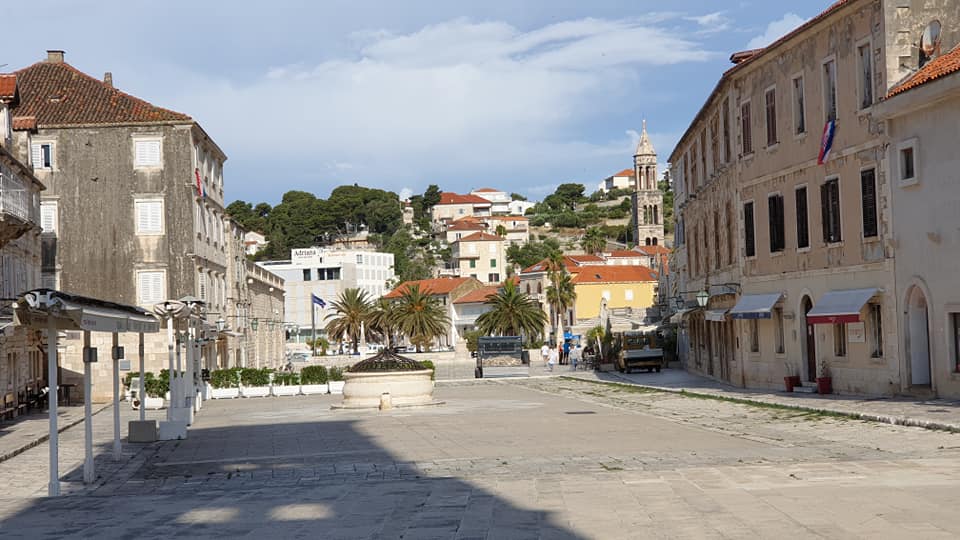
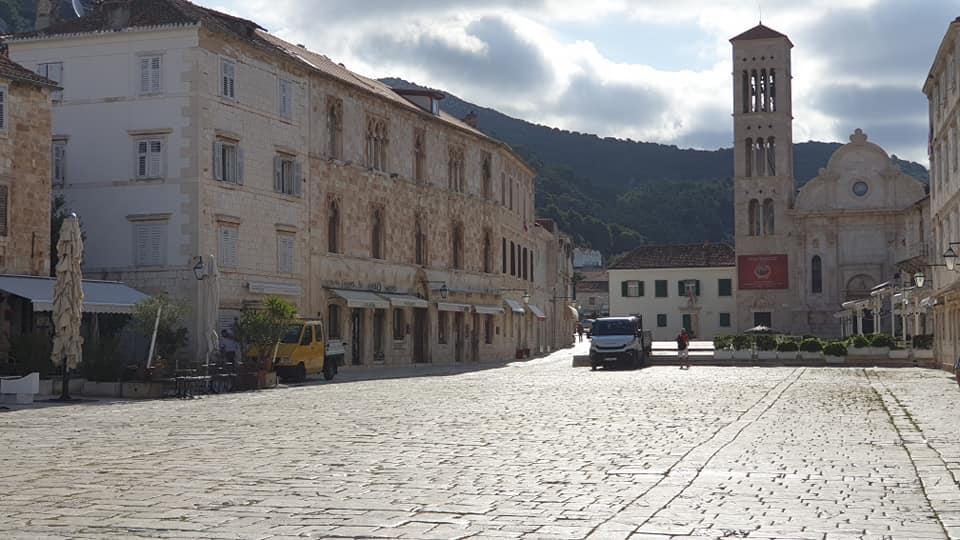
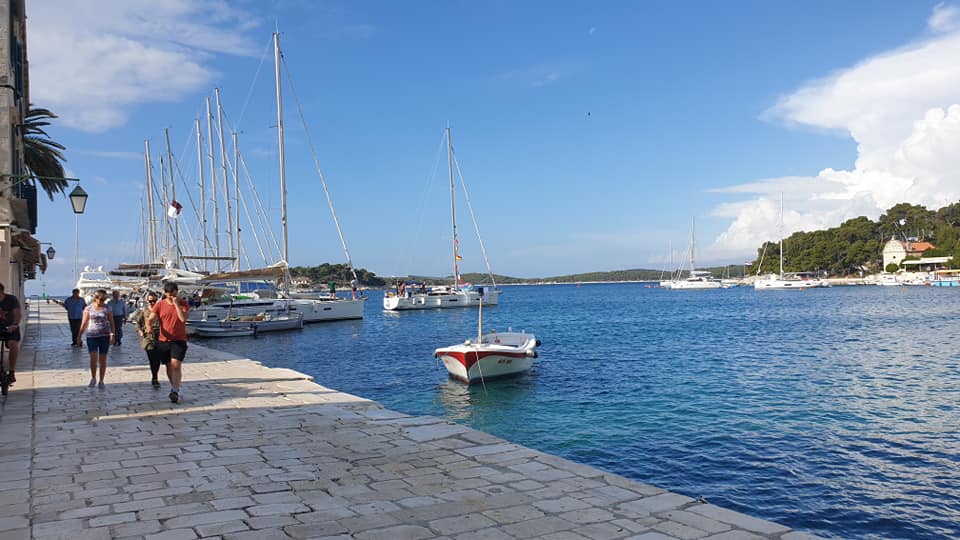
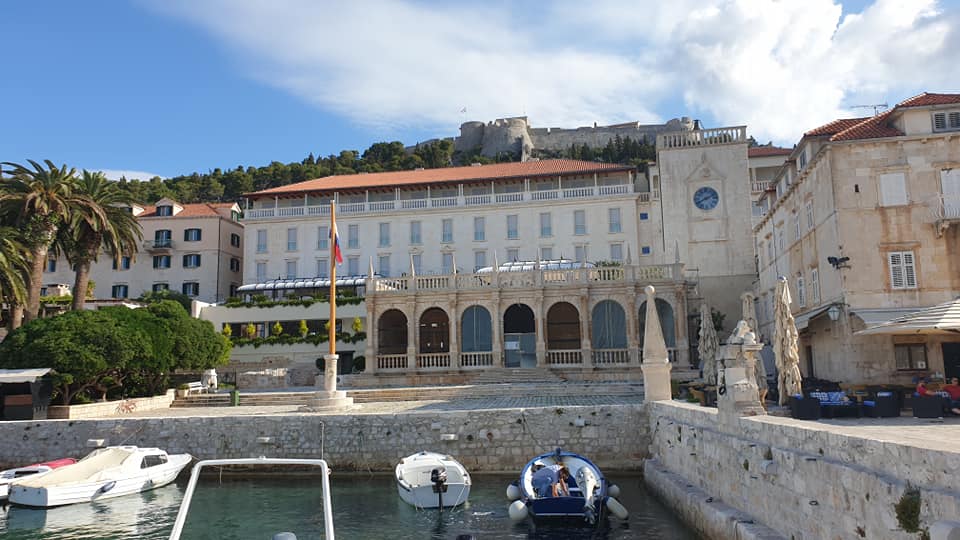
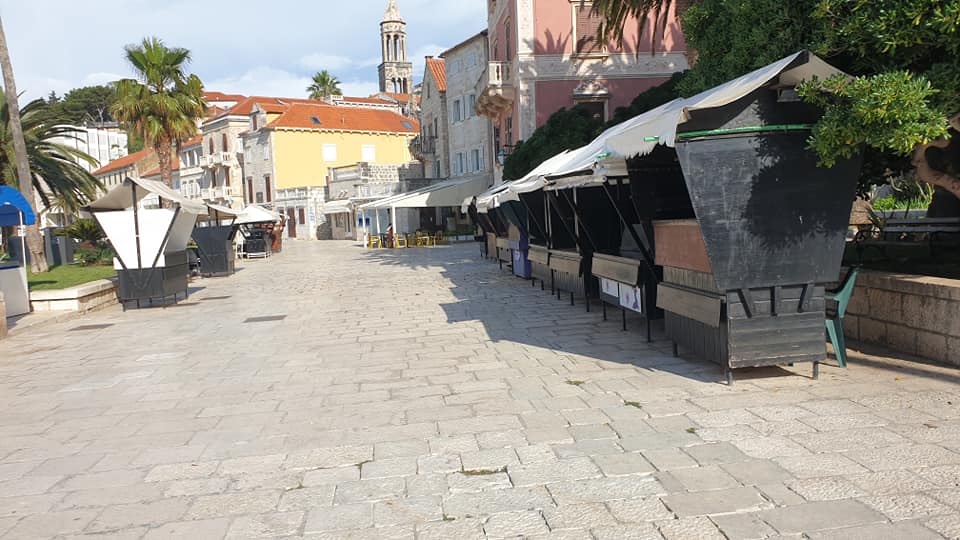
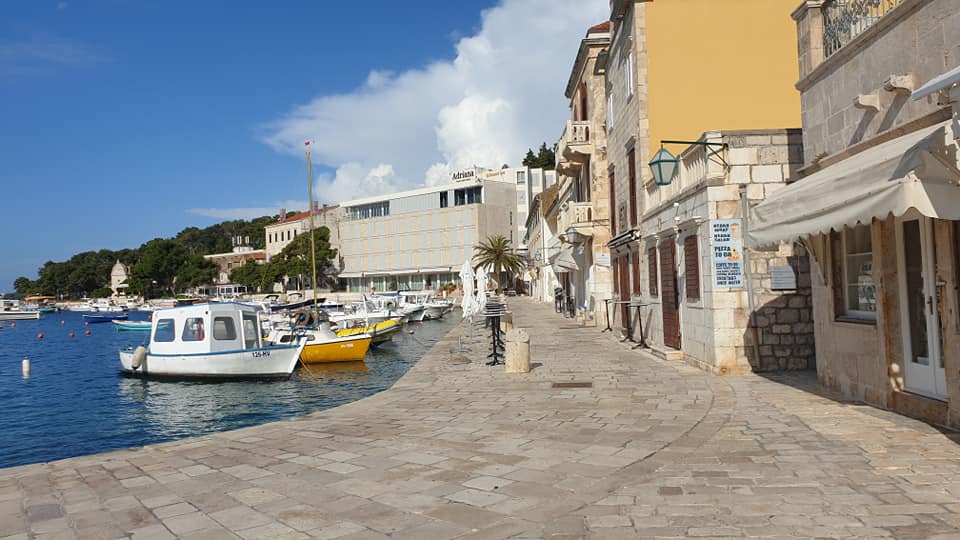
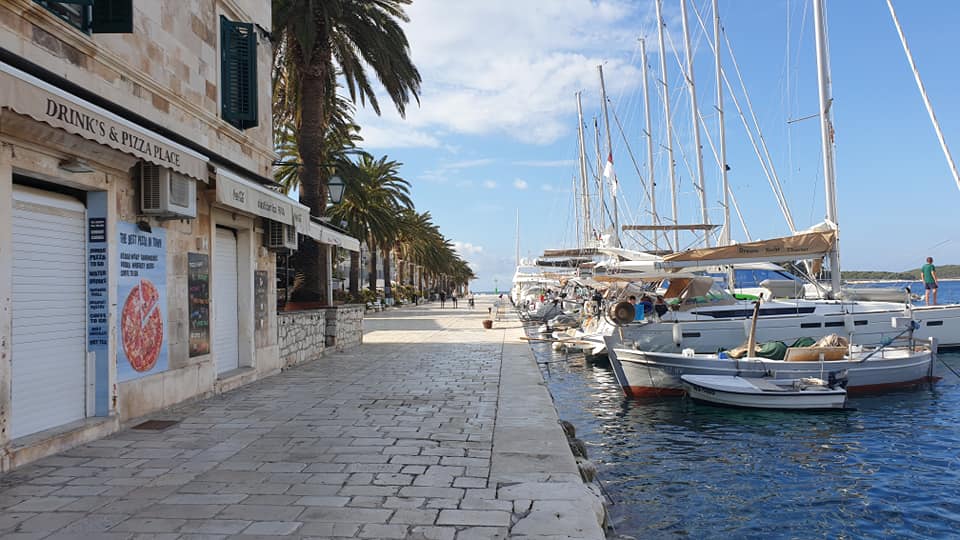
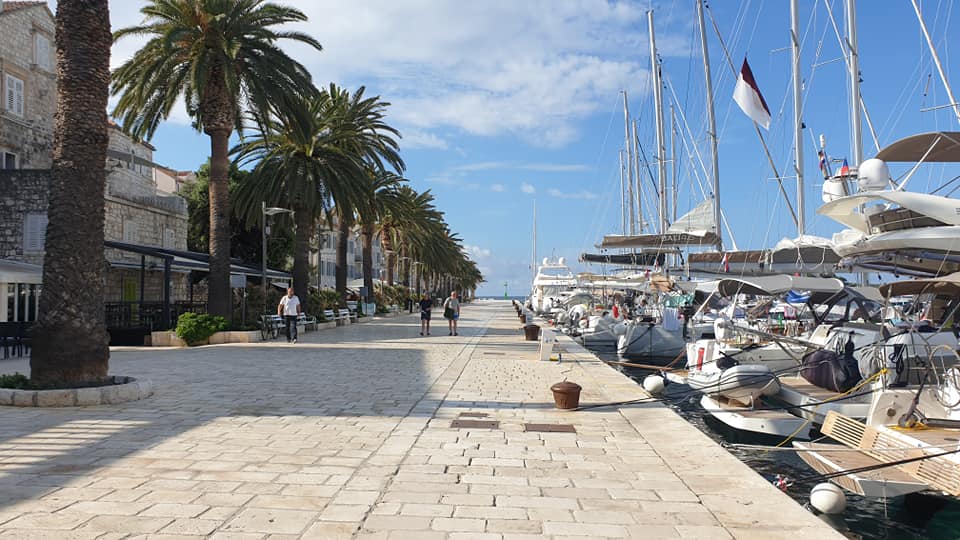
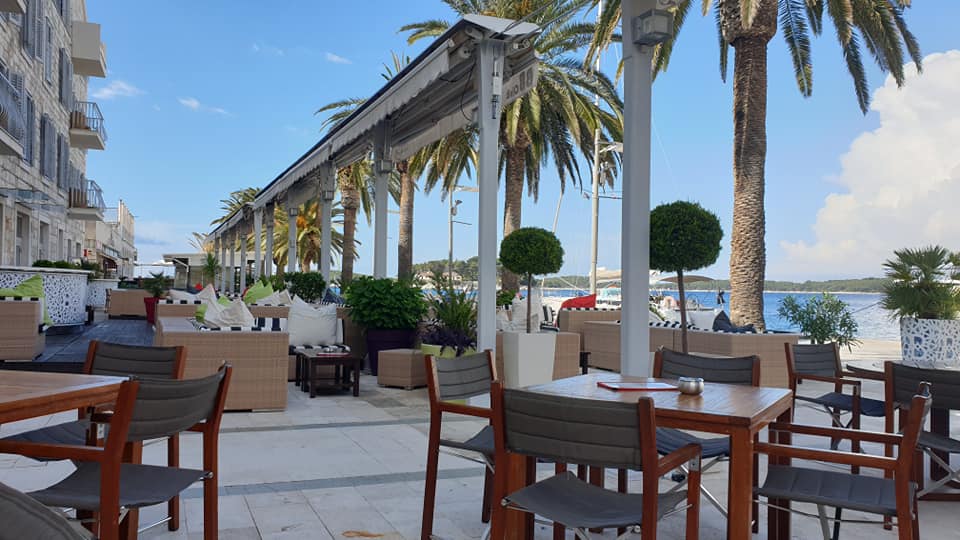
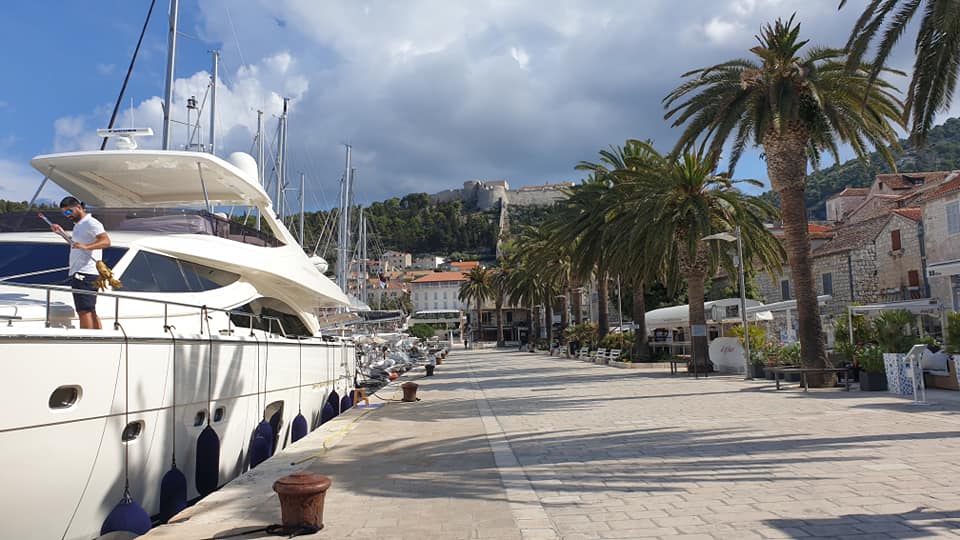
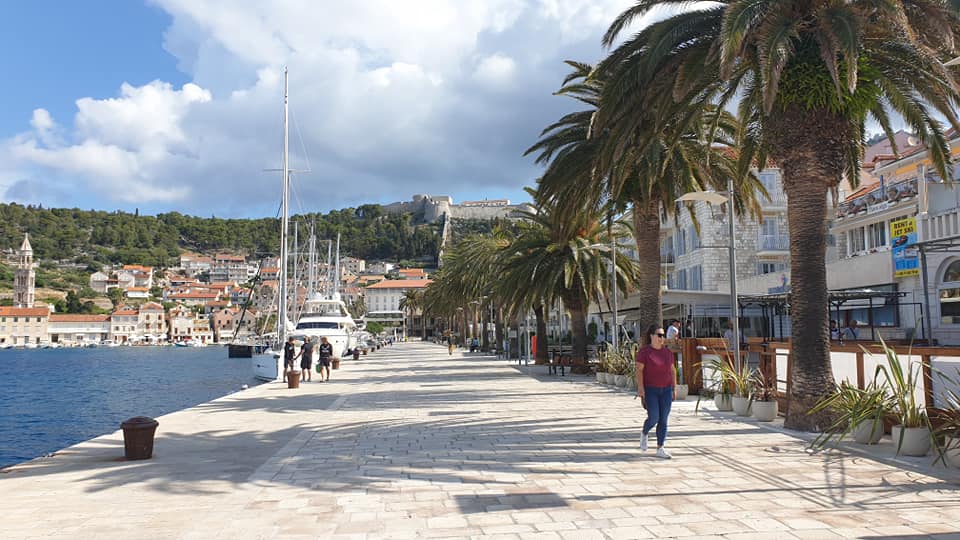
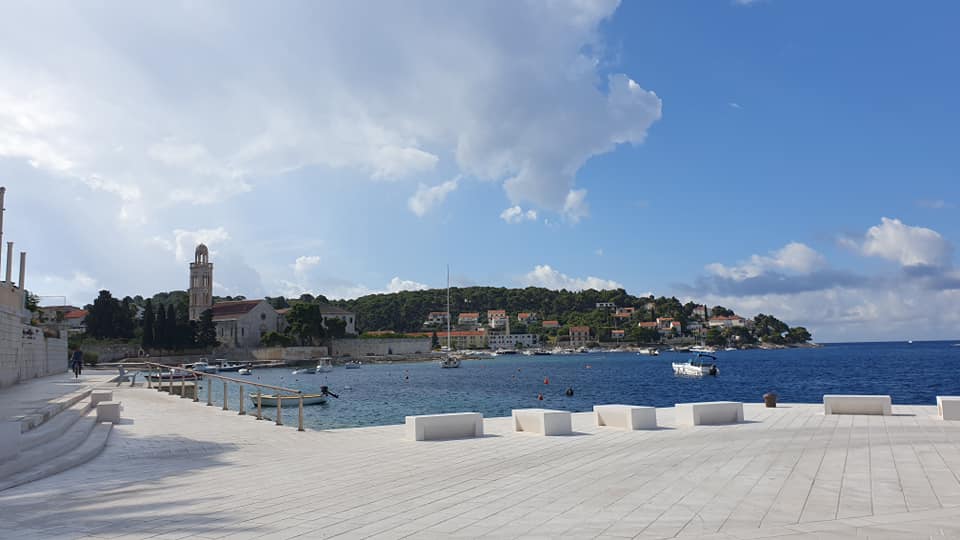
And if you're looking to park in Hvar Town? You might not see it this cheap again:
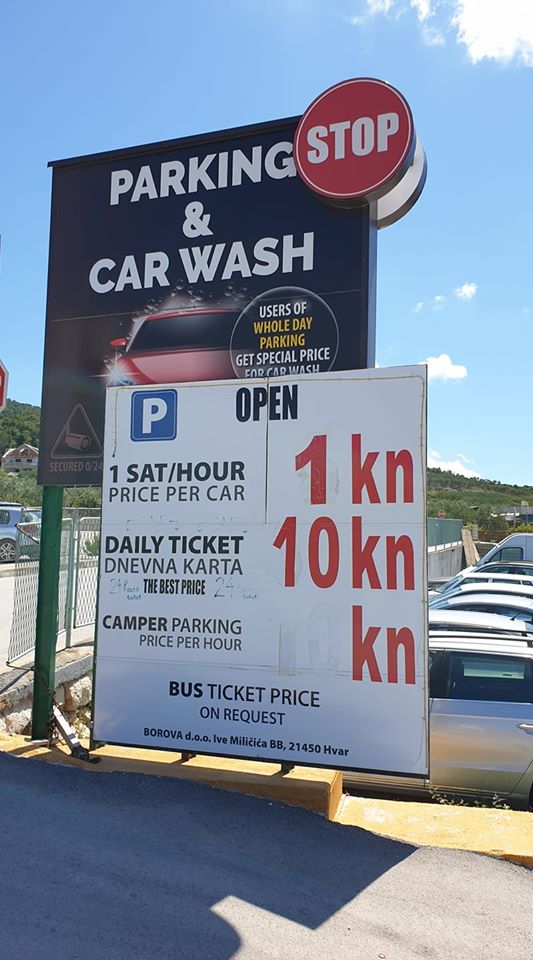
For the latest travel info, bookmark our main travel info article, which is updated daily.
Read the Croatian Travel Update in your language - now available in 24 languages


